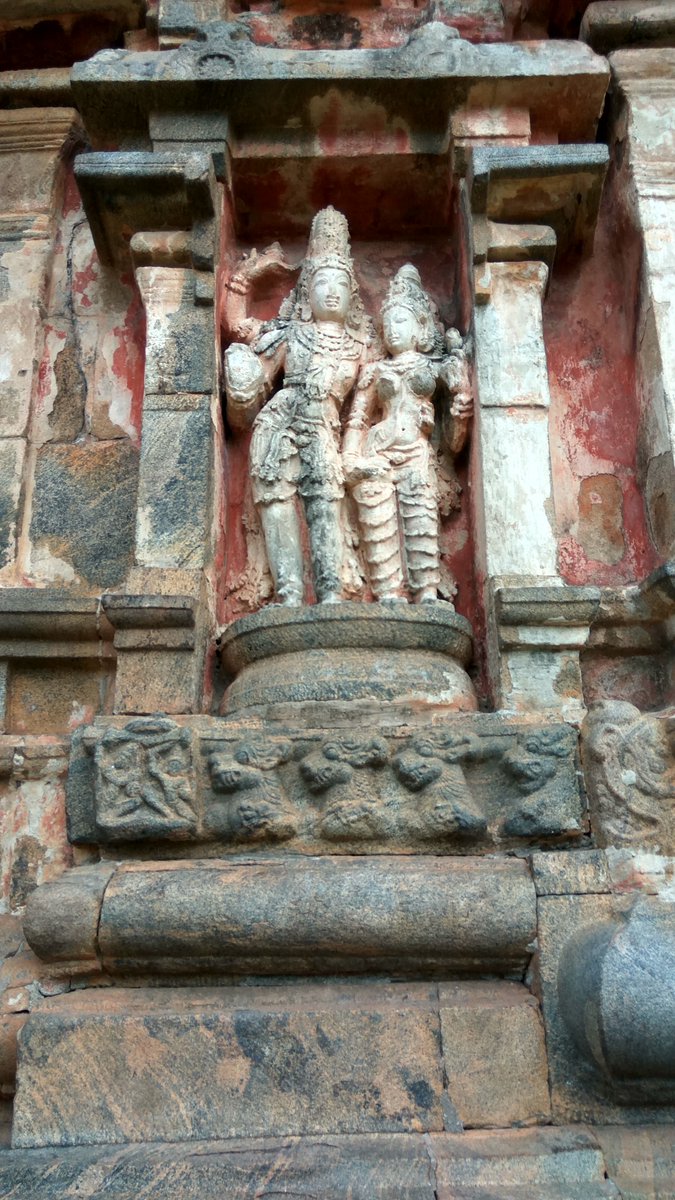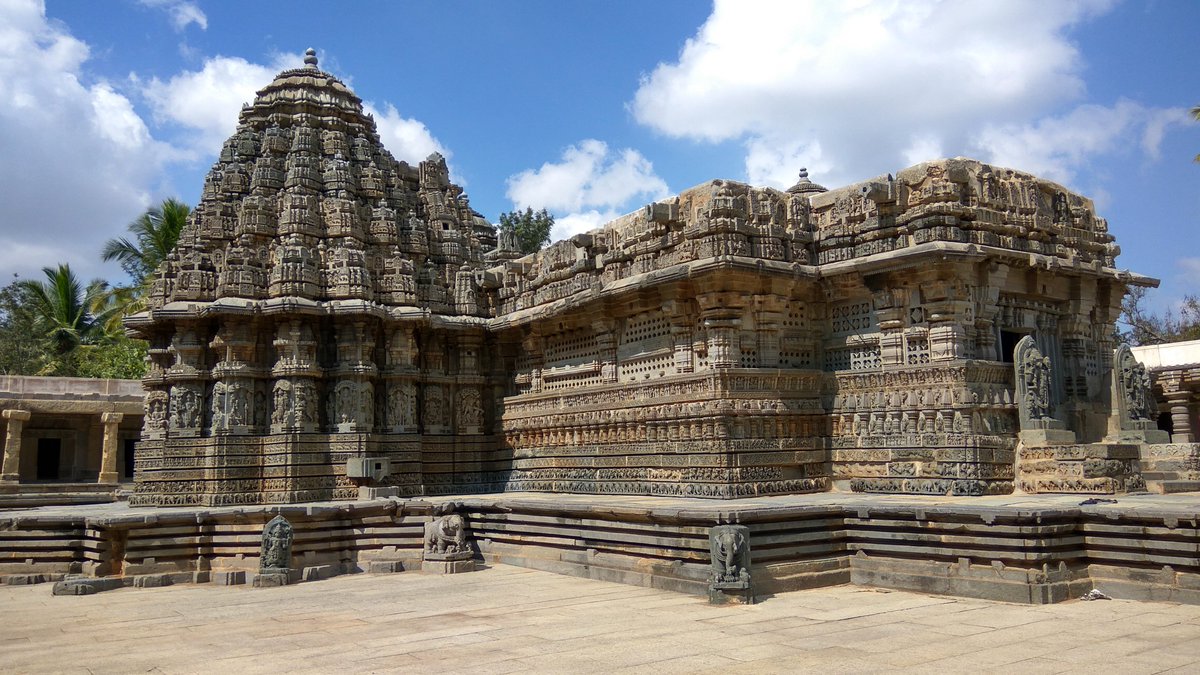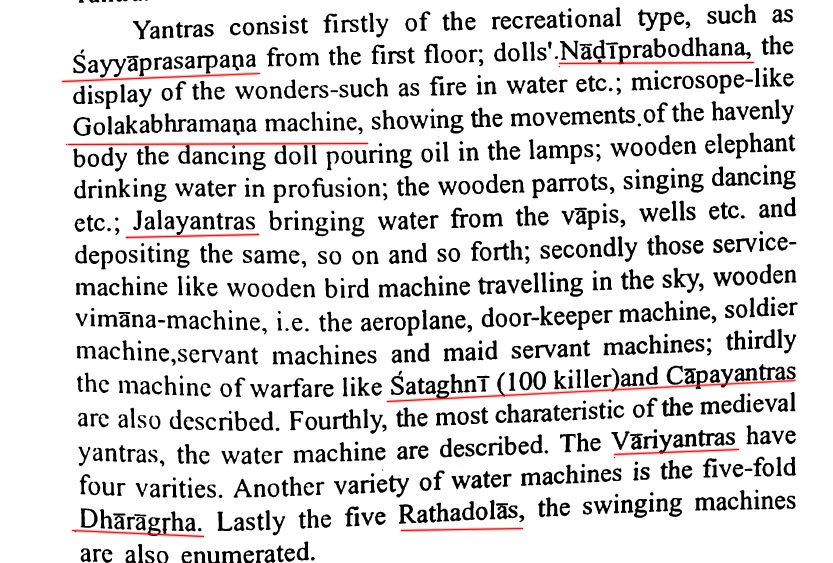A Thread on the Brihadishwara Temple at Gangaikonda Cholapuram,a Shiva temple built during the absolute zenith of Chola sovereignty, when they ruled over everything from the plains of the Ganga to lands far across the ocean in modern day Lanka,Thailand,Indonesia,Cambodia,Malaysia 







Built in the year 1025 CE by Rajendra Chola I,son of Raja Raja Chola, the temple was meant to showcase the might of the Cholas after they had established their sovereignty over vast territories. The name Gangaikonda translates to the one who conquered the kingdoms along the Ganga 
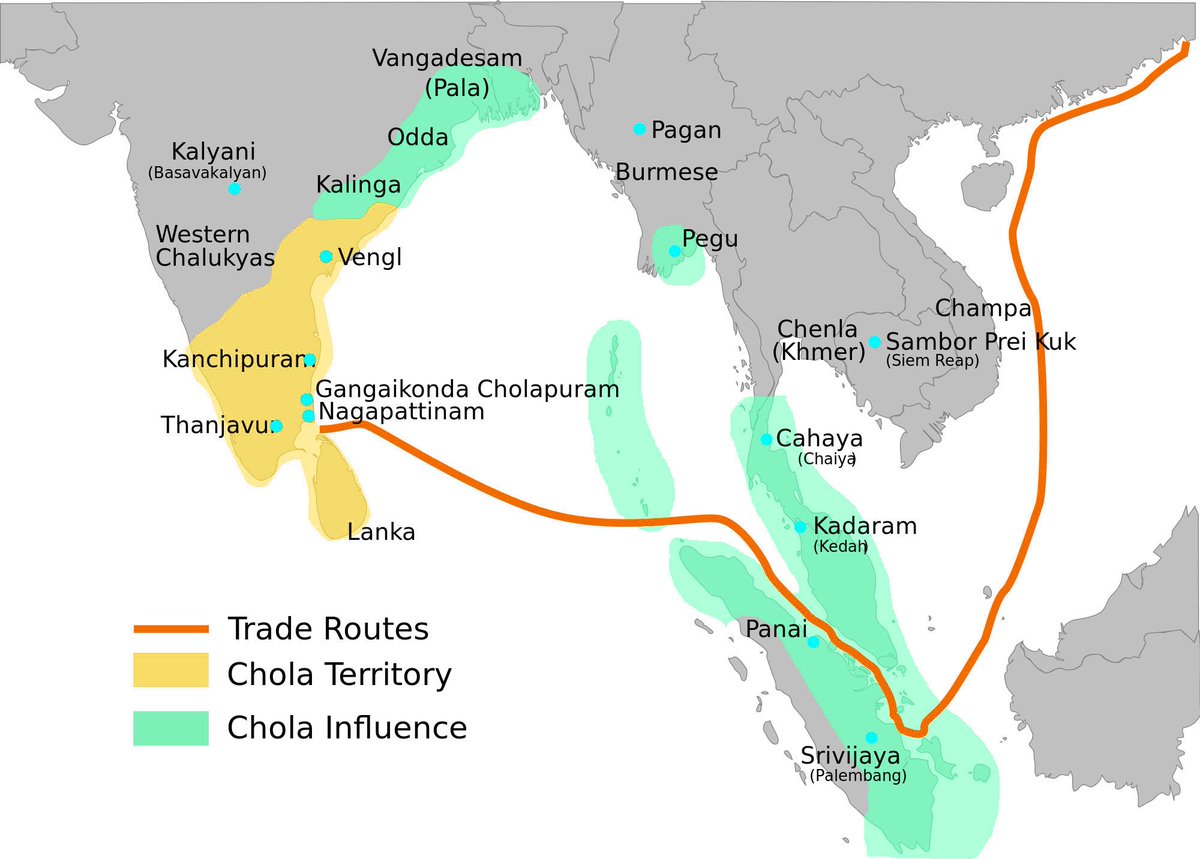
The Vimana which stands at 182 feet makes it the 5th tallest in Bharat.When it was originally constructed in 1025,it was the 2nd tallest. Rajendra purposefully built it shorter than the one built by his father.Yet gives an illusion of great width & height
https://twitter.com/_ugra_/status/1045340725565521921
Apart from the Vimana, 2 other structures immediately catch the eye at Gangaikonda. They are the granite Nandi & a huge water well named Simhakeni, whose upper structure is shaped like a lion, into which Rajendra had water from the holy Ganga poured into. 
https://twitter.com/_ugra_/status/875052472108072960
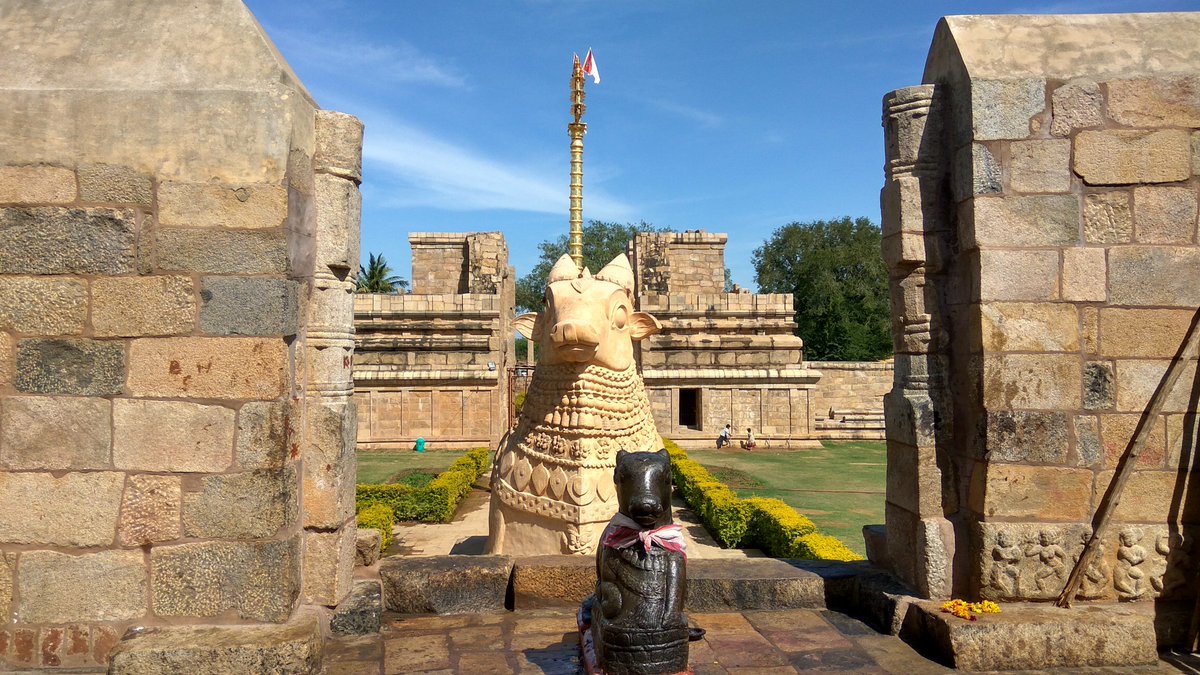
I'll take you through some of the carvings along the temple walls, these aren't your typical carvings seen in most temples. They are enormous in size. Seen here is a lifesize (probably bigger) carving of goddess Gaja Lakshmi. Notice the two gajas flanked on either side. 

Nataraja performing tandava while holding fire(Agni) in his left rear hand, gajahasta mudra in the front hand, unfortunately the snake which is held by Shiva in this front right hand is heavily damaged & not seen clearly here. But Damru can be seen & Apasmara under his feet. 
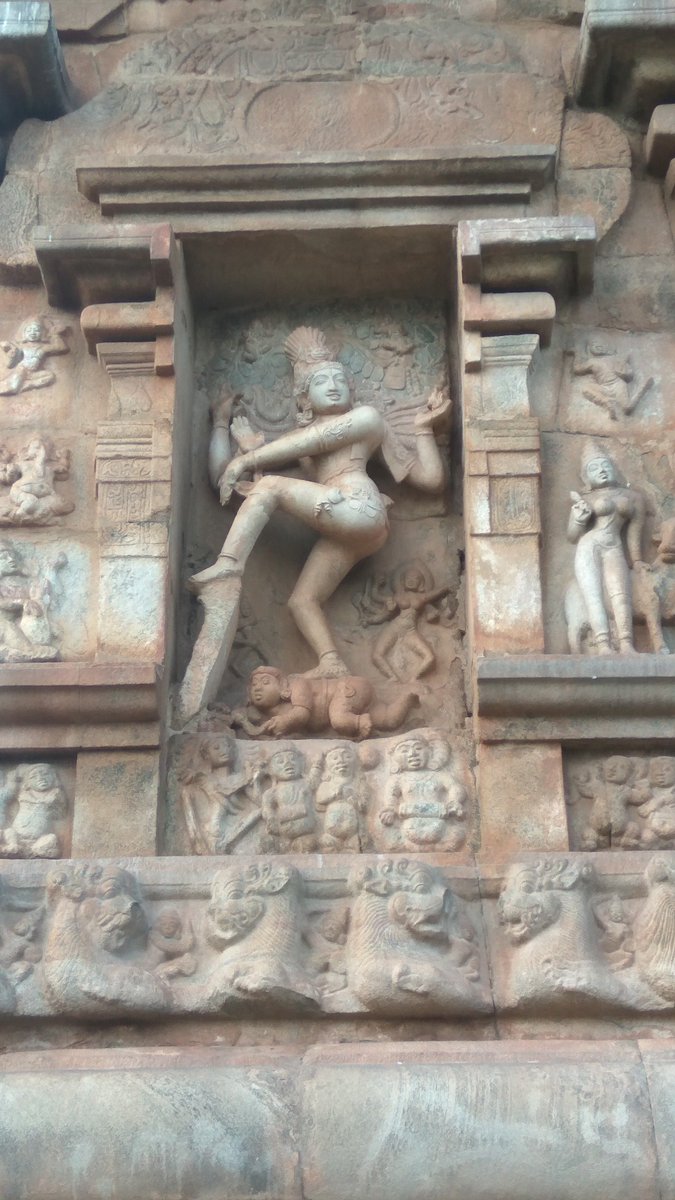
A very commonly seen form of Lord Shiva in most Chola temples is the Lingodbhavamurthy, all carvings of Lingodbhava also depict Brahma as Hamsa & Vishnu as Varaha, unfortunately its damaged here. Lingodbhava is carved in the west direction directly behind the main Garbhagriha. 

Thought I'd mention here. Lingodbhavamurthy is also one of the most sought after sculptures in the international Hindu artifact smuggling market. A whole panel belonging to this temple was smuggled out to the Guimet Museum in Paris.
https://twitter.com/_ugra_/status/993413069815463936
Murthis of Maha Vishnu with Sridevi and Bhudevi, dispelling any myths created by marxist distorians that the Cholas didn't encourage Vaishnavite tradition. 

A splendid carving of Ardhanarishvara. The left half is Shiva & the right is Parvathi. The most fascinating part is even their respective Vahanas are depicted as they are! The 2nd half of Nandi (unfortunately damaged) is actually the lower half of a Simha if observed closely! 

Some of the most exquisite carvings are carved way up on the upper tiers of the 182 foot Vimana. Its nearly impossible to capture the intricacies through the camera lens from ground level. One simple has to visit the temple to marvel away at these carvings. 

A perfect symmetrical carving of Shankaranarayana also known as Harihara. The left half is Shiva & the right Maha Vishnu. 

A damaged yet highly intricate carving of Kala Bhairava. Seen below to the left is his Vahana, Shvan (dog). 

A desecrated carving of another manifestation of Lord Shiva known as Dakshinamurthy. Much of the temple has suffered immensely as a result of successive islamic invasions in the 13th & 16th centuries & eventually at the hands of the colonial x'tian brits. 

Colonial x'tian brits demolished large portions of the outer walls of the temple to make use of its granite to build a dam across the Kollidam river a few miles from the temple. So what we probably are seeing now is a mere shadow of this great temple. 



Desecrated murthis dumped in one corner of the vast temple complex. Mutilated in typical islamic iconoclasmic style. Some beheaded, some nose disfigured, female deities mutilated in sensitive parts. Heart always sinks at such a sight... There is much to learn from history.. 

Now back to the sculptures. This is a fascinating & rare sculpture of Narayani, who is a fusion of Durga & Maha Vishnu. Durga is considered to be the sister of Maha Vishnu. Hence the name Narayani. Sometimes Narayani is also referred to as Vishnudurga. The shanka chakra is seen. 

Dwarapalakas on the south entrance of the temple. These are easily 10-12 feet in height. Just massive. 



A brilliant carving of Goddess Saraswathi in Padmaasana. Notice she is holding the Suchi Mudra (index finger out) with the right front hand,a maala in her rear right hand,a pot of soma in her rear left hand &a pustaka symbolizing the Vedas(not clearly seen) in her front left palm 

Lord Shiva depicted as Aghoramurthy here. He has 8 arms here, each arm wielding an asthra. They are the sula, damaru, paasa, kapaala, danda, dhanus, baana & a khadga. He is wearing a snake as an ornament in the waist. Observe the fierce look on his face. 

Lord Shiva depicted as Bhairava in this carving. Seen on the bottom left side is his Vahana, Shavan/dog (highly faded though). He is also wearing a yajnopavitam & a naga as an ornament around his waist. He wields the Trisula & also has damru in his rear hand. 

A very popular dance form of Lord Ganesha. The Nrithya Ganapathi. He has 4 arms, In his front right hand holds a tusk & the upper hand with ankusha, on the left hand he holds an axe & noose. He holds on to his favourite sweet, the modakam with his trunk & front left hand. 

A very calm, reassuring & serene looking Lord Shiva as Nataraja, performing the Ananda Tandava. Contrast with the fierce look on the face of Aghoramurthy a few tweets back. The sculptors have managed to capture every possible emotion perfectly. Really remarkable. 

Lord Shiva as Kalasamharamurthy also known as Kalantaka, seen here dancing in fury on Yamadharmaraja. This aspect of Lord Shiva depicts him as the ultimate one who has conquered time & death. He manifests in this form to save his great bhaktha, Markandeya from Lord Yama. 



An elegant carving of Uma-Maheshwara. Notice how the sculptor carves out a support structure for them to rest their feet on. 

The Devi here is known as Brihannaayaki, she is also called Periyanaayaki Amman. She has separate gudi to the north as seen here. The gudi outer walls are filled with innumerable carvings just like the main Shiva temple. 



On such amazing carving is that of Bhairava. Notice the hair of Shiva which resembles a raging fire flame. Also notice the fierce look on the face. He wields a Trishula as weapon. 



The awe inspiring Vimaanams of Brihannaayaki Devi (Parvati) & Brihadeeswara (Shiva) as seen from the north-west direction during dusk. 

A few yards away from the Brihannaayaki Devi sannidhi is another small gudi dedicated to Durga Devi. This is the west face of it. 
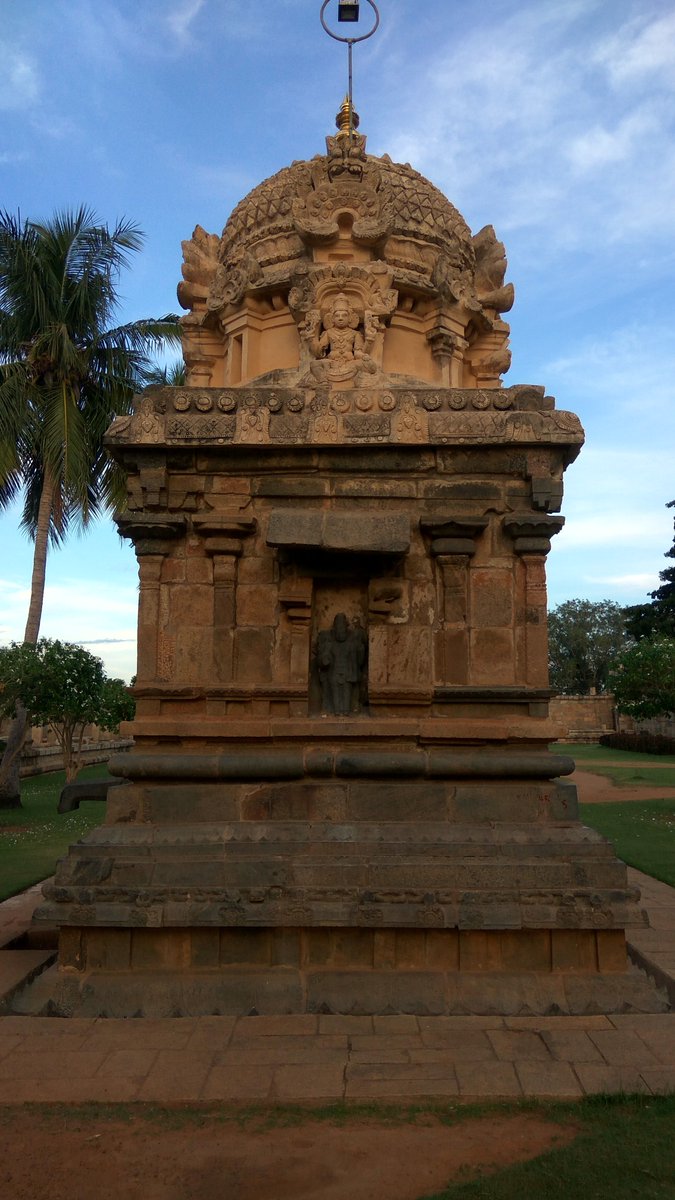
Now to the place that showcases the most amazing aspects of Hindu Dharma & its rules of conduct of post war. Its called the Simhakeni. Its a lion shaped water well. Rajendra Chola who built it after defeating the Pala king Mahipala had water from Ganga poured into this well. 

The same water is used to this day to perform abhishekam to the Shiva lingam inside the Garbhagudi. This is how Bharatiya kings paid tribute to lands far away within Bharat. Be it the Pallavas bringing the Ganapthi from Vatapi or this. They fought with honor to establish Dharma🙏
There is also a separate gudi dedicated to Chandikeshwara in the north-east direction of the main Shiva temple. He is one of the 63 Nayanmars & the main guardian of temple wealth. Seen here to the right side is the Chandikeshwara Gudi. In the background is the Devi sannidhi. 

Bhaktas after performing pradikshanam(parikrama) to Lord Shiva come over to the Chandikeshwara gudi & make some kind of a noise (be it snapping of fingers or a clap) to wake him from deep meditative state to tell him they are leaving the temple empty handed.
Its ironical that HRCE thugs today are indulging in smuggling the murthis of Chandikeshwara himself from such ancient temples....
Finally the imposing & majestic granite Nandi adorned with innumerable ornaments like bells seated just in front of the golden Dwajasthambam. 

Checkout the perfect symmetry. Everything from the Dwajasthambam to the Nandi to the Dwara to the Lingam inside the Garbhagudi line up in one single plane collinearly. Geometrical perfection. Imagine the grip over Mathematics these ancient Hindu architects possessed. 

A remarkable carving of Shiva & Parvathi blessing Chandikeshwara.Many including me assumed it to be Rajendra Chola,which is incorrect.Makes sense too as this carving is found in the north-east corner,adjacent to the Chandikeshwara gudi.Thanks to @Ethirajans for pointing this out. 



I'll conclude this temple thread with these silhouette shots I took during sunset. Hope you found the thread useful. Thank you for reading 🙏 



• • •
Missing some Tweet in this thread? You can try to
force a refresh




